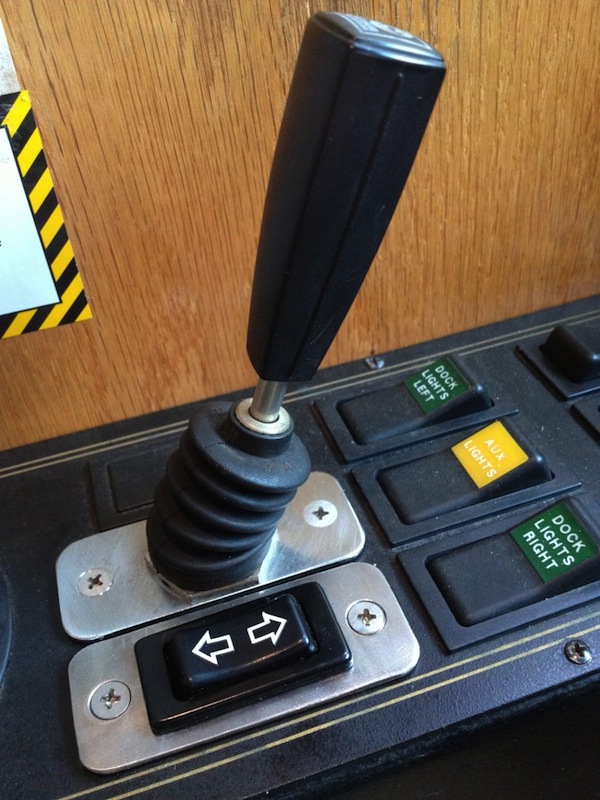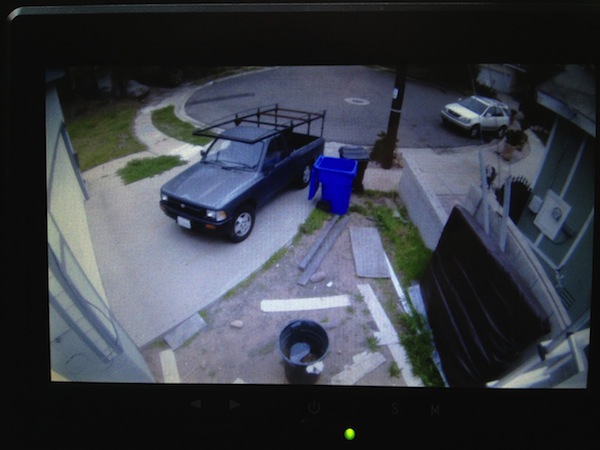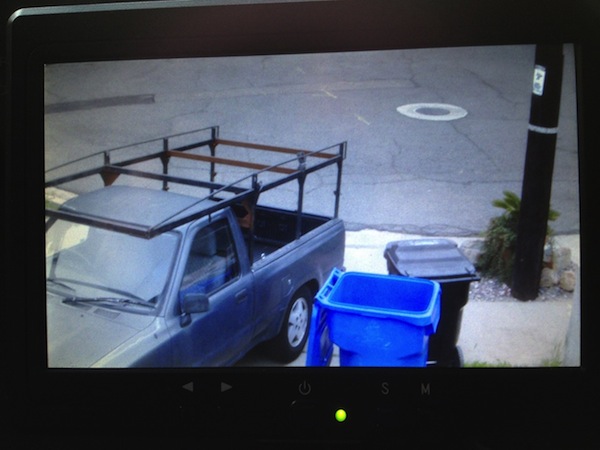by Pierce Stewart 1993′ U300
There has been a lot of posts on rearview cameras, monitors. I wanted to share how and why I did my installation.
Why did I choose this particular camera? There are well over six thousand cameras listed on eBay so I just went through a few hundred until I found the largest camera that would fit in the hole left by the old one. I wanted the maximum number of LEDs for night vision and good resolution.
The camera I selected is a T3 with 18 LEDs for $23.74 delivered, no duty, no tax, etc. Check the seller info for feedback rating, warranty info, etc. You will need a PayPal account to buy almost anything on eBay. Expect 10 to 18 days delivery. They usually provide excellent shipping date info by email.
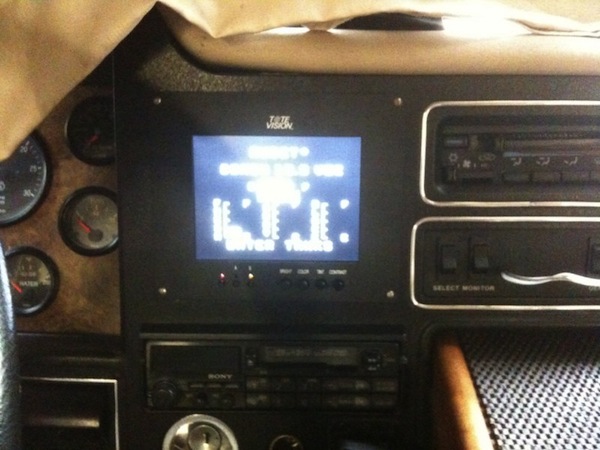
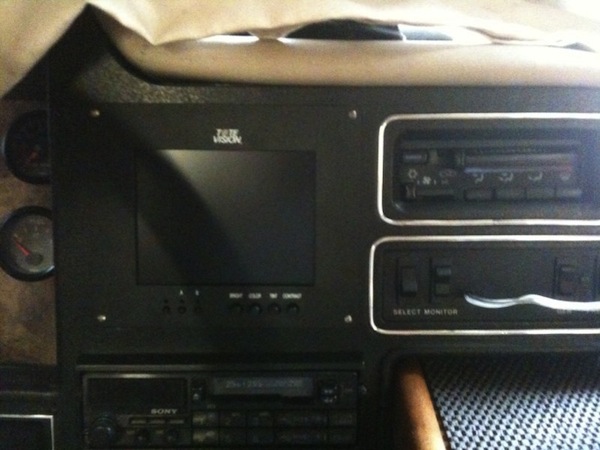
The monitor I purchased $59.26 delivered.
Installation
1. Clear off the bed, put an old sheet over linens, get a flashlight, screwdriver, etc., open compartment, remove wooden camera access cover and unplug the old camera.
2. Climb the ladder and remove the old camera.
3. Make cover plate out of 1/8″ aluminum stock using measurements from the template. Make sure the camera fits through the cover plate hole (see photo).
4. Modify new camera included mounts by cutting and then bending so they look almost exactly like the photo.
5. Using a pencil, mark above, below and to the side of the old mounting holes, hold the alu template up and trace the outside so you won’t go outside plate when grinding on fiberglass.
6. Hold the camera with modified mounting tabs up on the outside and mark tabs so the holes to be drilled will line up with the old holes. Use a pencil to trace around tabs for the area to be ground down approx. 1/16 or so.
7. Drill holes in the mounting tabs and then countersink with a larger drill so a flat head Philips screw will fit fairly flush after installation.
8. After putting an old towel on the inside of the compartment to catch the fiberglass dust and putting on a long sleeve shirt and particle mask, use an air grinder, Dremel moto tool or like device to grind down the area as shown in the photo. Don’t fall off the ladder.
9. Install the camera with flat-headed Philips screws, place the cover plate in position and pencil mark the location for the four plate mounting screws in the fiberglass. Drill using a small bit and then secure a plate with four self-tapping screws. Use soft dumdum to go under the plate to keep water out. I would have used silicon but wanted to be able to easily take plate/camera off in the future.
10. Take a shower, wash the shirt and then make the two 12V and video connections in the compartment. You may need a trip to Radio Shack for the adapter for the 12V connection. I cut and soldered the connection but easier to buy the adapter.
I sanded the mounting plate, epoxy primed it and then used epoxy appliance white to match it with the U300. Had spray cans already or probably would have just used any old white.
The location/installation for the monitor is optional. I put mine in the middle as I wanted to also mount a camera on the right side to catch the blind spot below the passenger where the mirror does not see. I wanted to be able to look at the mirror and then catch the monitor image without changing my line of sight much. I painted a steel strap, ran the center table all the way out and after pre-drilling the strap (one hole for the monitor mount, two holes for the strap to dash), reached up and screwed it into place making sure to leave enough sticking out to screw the monitor mount to. Connections EZ under fold up dash top especially if you use the Foretravel schematic.
Nice to have a label machine to identify wire codes. This monitor does the inverted image, reverse image so the camera can be turned upside down and work. Make sure to use the default video input so when the monitor comes on, the rear camera is displayed. Switch cables until the image is on when the monitor starts up. Easy to switch to the second camera using monitor buttons or supplied remote control.
Lots of other cameras available for optional second side mount installation.
I think this camera installation looks pretty factory and am pleased with the final outcome. I did make some mistakes so that’s why I included the fiberglass dust stuff.
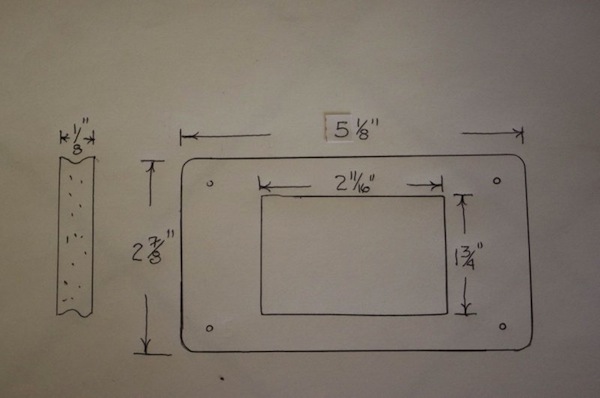
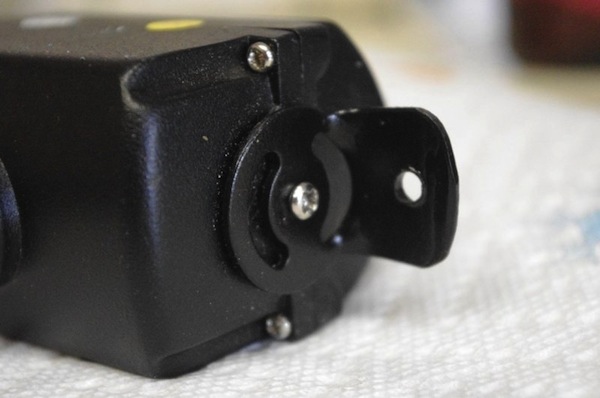
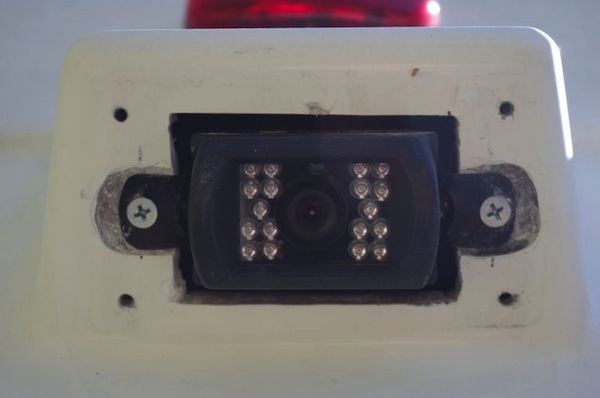
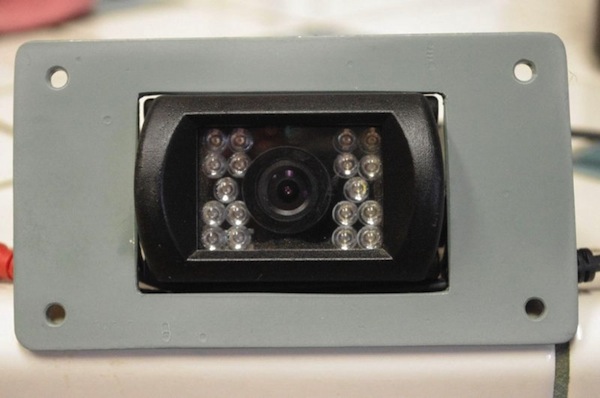
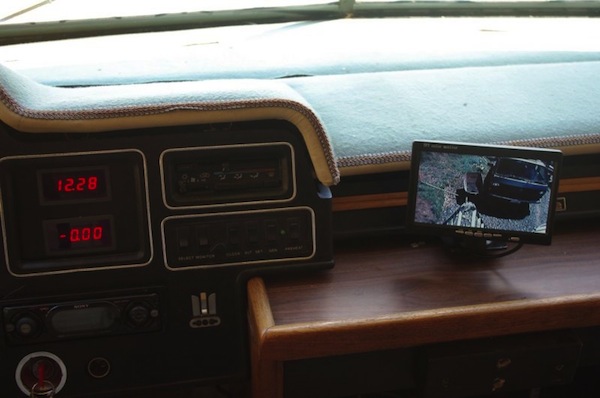
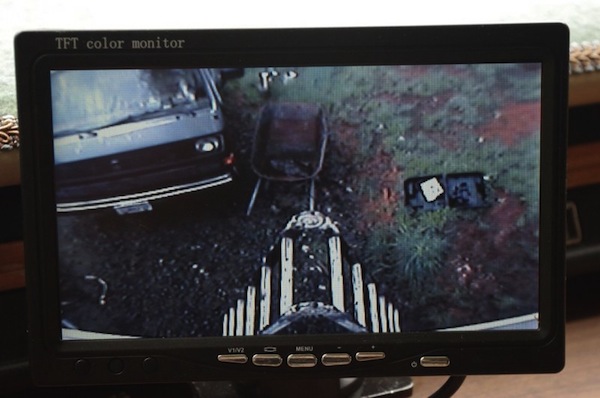
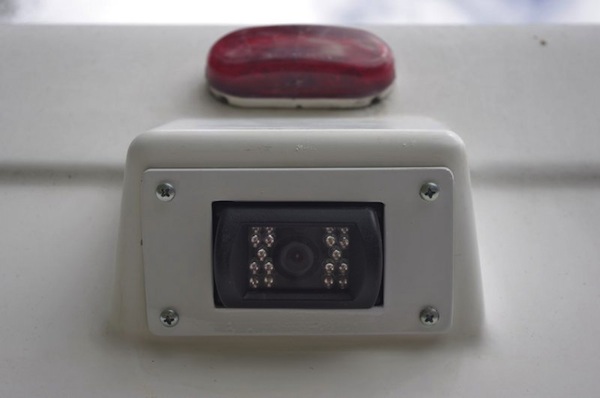
Rear Camera Replacement – 1999 U270
By Don and Tys 1999 U270 36′
Finally got the switch wired in to provide tilting the HD Back up camera. The project is far from over because I still have to seal the area up and finish putting everything back together. Below is a little video on the power tilt mechanism which I thought some might enjoy. I am using a linear actuator that I got from a guy in China that has a 2-inch stroke which seems to work just about perfect for this application.
I made a piece of linkage on which I can adjust the angle and therefore adjust the actual stroke length of the camera movement. I am using a power window momentary rocker switch which reverses polarity to the linear actuator motor and therefore allows it to stop in any position. The actuator has a limit switch that stops at the end of each stroke and turns it off but you can stop at any place in between with the momentary switch.
“Wholesale CCTV Security Camera” which currently sells for $239.85. The price seems to fluctuate a bit on the site… I think it was a little less when I bought it a few months back. This outfit seems very good to deal with providing great tracking & quick shipping. Initially, I tried another outfit whose website doesn’t even exist anymore, and they never sent the camera. Fortunately, PayPal gave me a refund though it took a week or two.
The next link in the outfit which I bought the actuator from, also from China. You can find retailers on the Internet selling these in the states, although the price is a bit higher (and most if not all are still made in China). There was a hold upon the shipping from this guy as the container was seized in customs because of contraband that was also in the shipping container. Even so, it only took about 2 1/2 weeks to get here from the time I ordered it. This guy did respond to my queries and provided tracking information although it took a few tries to get the right number.
The last link in the switch that I finally ended up using from Amazon. I actually purchased a few others on eBay but I didn’t like the form factor or action of the momentary mechanism. This one seems perfect… The only downside is that it doesn’t fit the knockouts for the other switches and I had to fabricate a plate to mount it in. I made the plate from an old miscellaneous piece of door lockset striker plate. In the picture of the switch, you can see the retarder Joystick next to it. I also made a mounting plate of similar stock for it because I didn’t like the wobbly mount of the original installation. Power Window Rocker Switch 5 Wire Motor Reversing Control
I’ve taken some pictures which show the camera mounting a little more clearly. Realize that some of this is still provisional and as I finish the project I will likely make some changes.
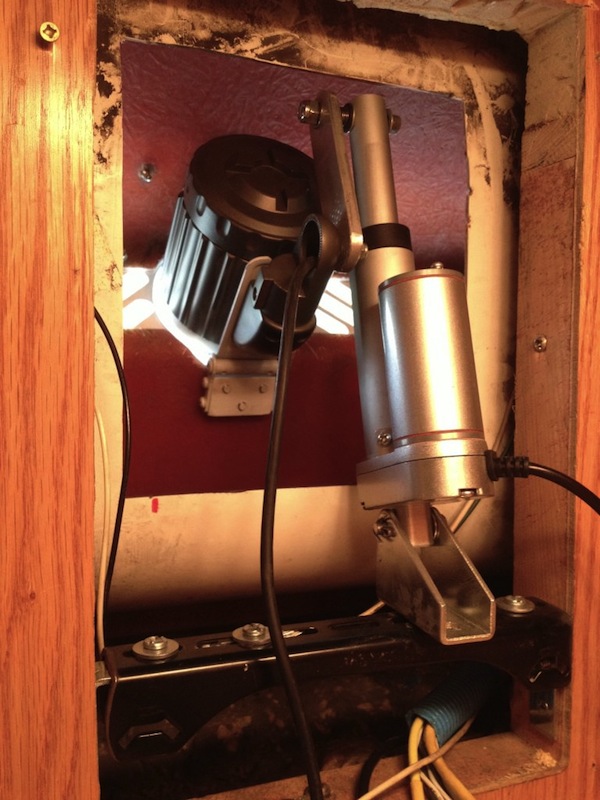
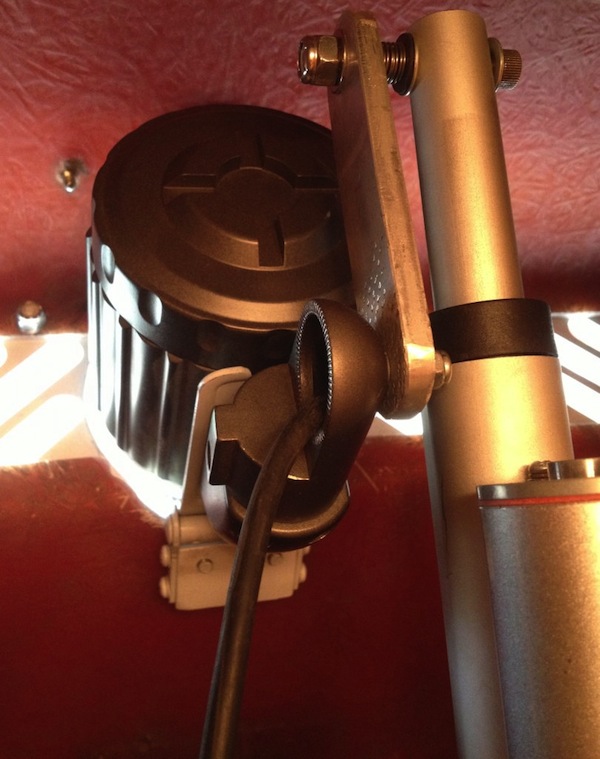
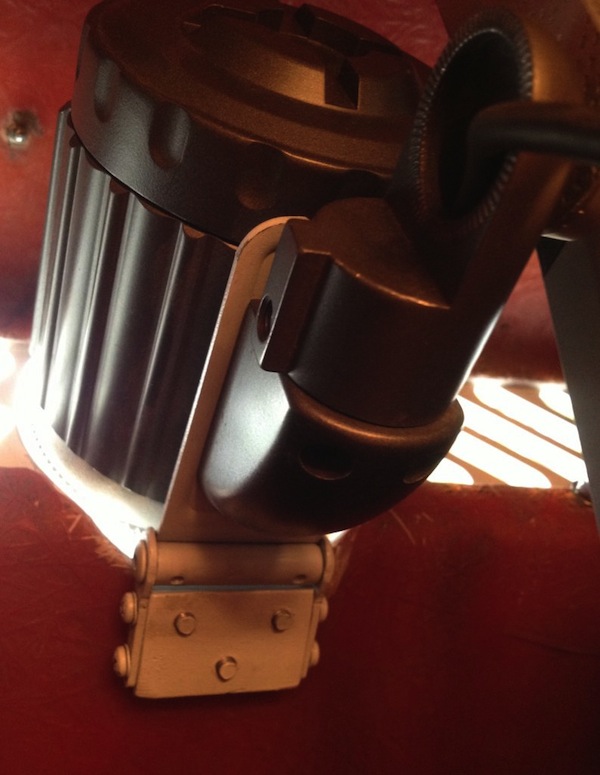
Due to the size of the camera, I had to make quite a few adjustments to the opening where you access the camera from the bedroom. Of course, I want the bedroom to be sealed from the outside elements, and it seemed like a good idea to keep the space directly behind the intake plenum sealed off from the bedroom and from the outside as well. It was a tricky project because of the curved shape of the wall behind the camera and because of having to work inside the bedroom cabinet while kneeling on the bed. Sort of like building a ship in a bottle.
While I was at it, I refined the tilt mechanism mount so that it could be sealed. The trim is all solid oak, not for looks so much as the fact that oak holds screws so much better than softwood. The hatch cover is made out of one quarter inch oak plywood laminated to the same fiberglass reinforced plastic (FRP) material I used on the underside of the coach. The sides and top of the enclosure are made out of Starboard (think plastic cutting board). The only thing that isn’t shown here is the three-quarter-inch foil-faced polyurethane foam insulation under the cover. There is a void behind the back wall of the bedroom which is mostly filled with expanded foam insulation. This insulation extends up to about the bottom of the cabinet over the bed. This void is used for cable runs and is sealed from the camera opening, as well as from the inside of the coach.
This camera features a native 1080P resolution, power zoom and one-touch autofocus, 50 IR LED’s for night vision, On-Screen menu system for set-up, IP66 waterproof. These are all nice features, the only downside is that the camera is much larger than the stock cameras and so the mounting is a bit problematic, but I think I solved the issues well enough using stuff lying around. I have jury-rigged a deflector/shade made out of some roofing drip cap (this was a 2′ piece that I cut off the trim for the bottom skin at the front bulkhead joint). What I would like to do eventually is to have extreme fabricate a deflector out of fiberglass molded right into the rear cap.
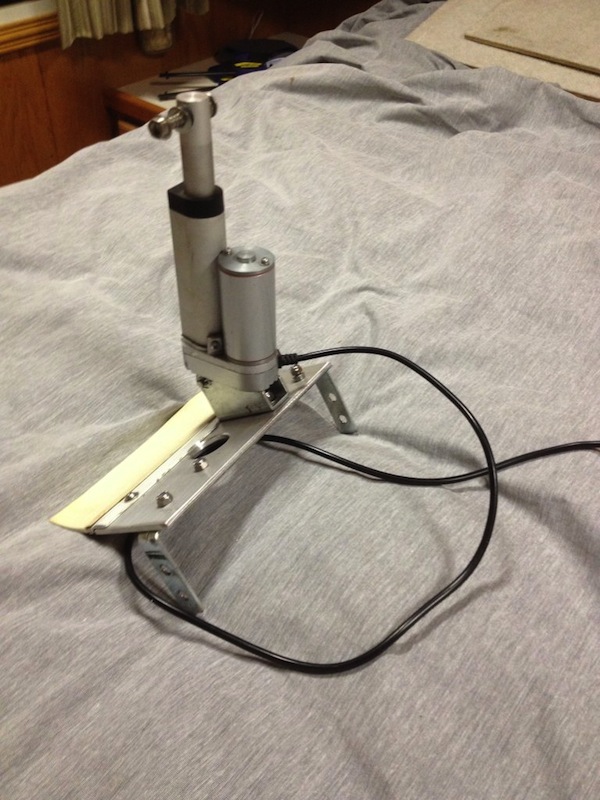
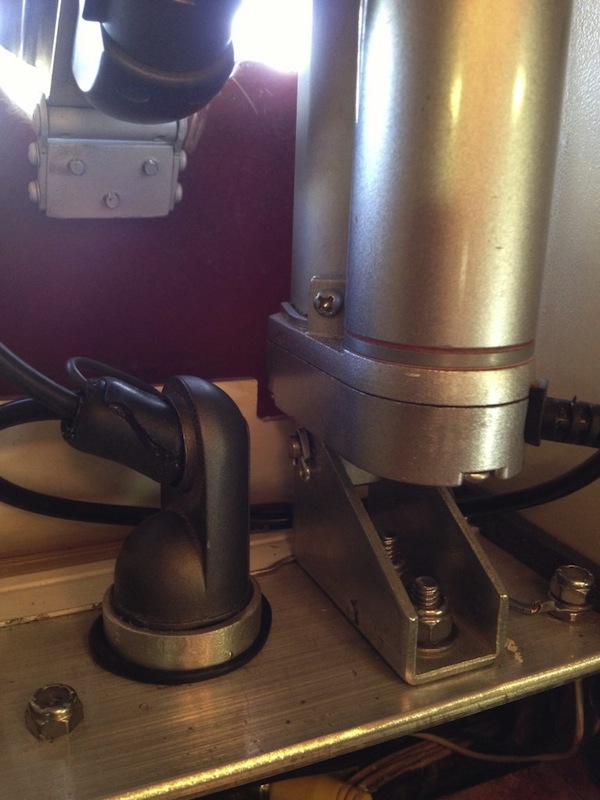
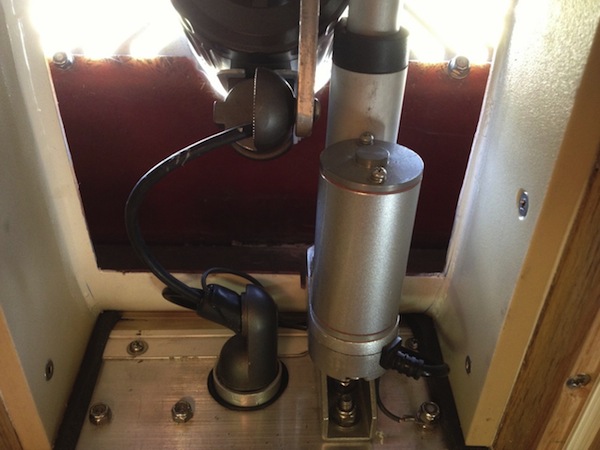
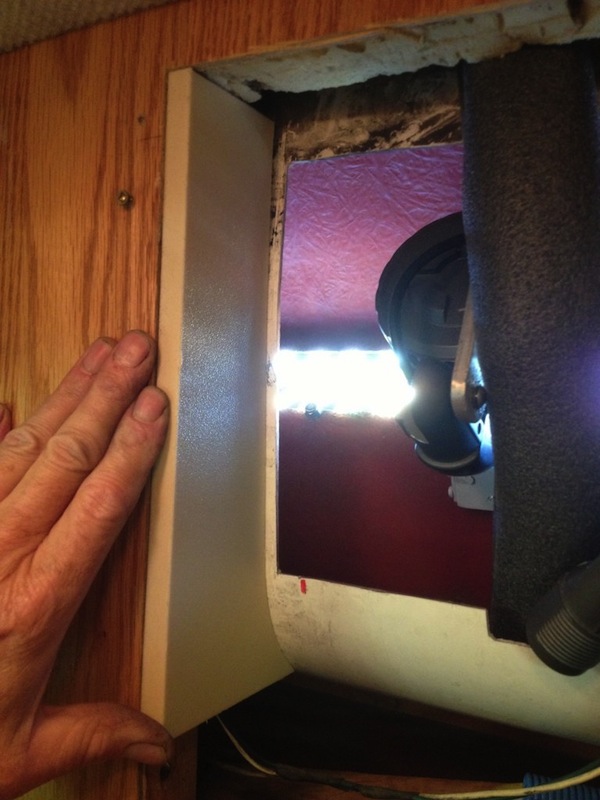
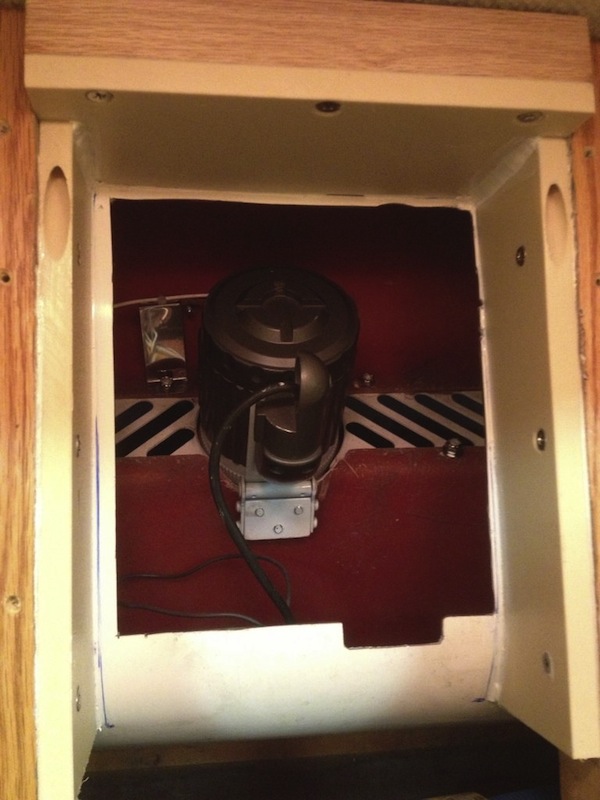
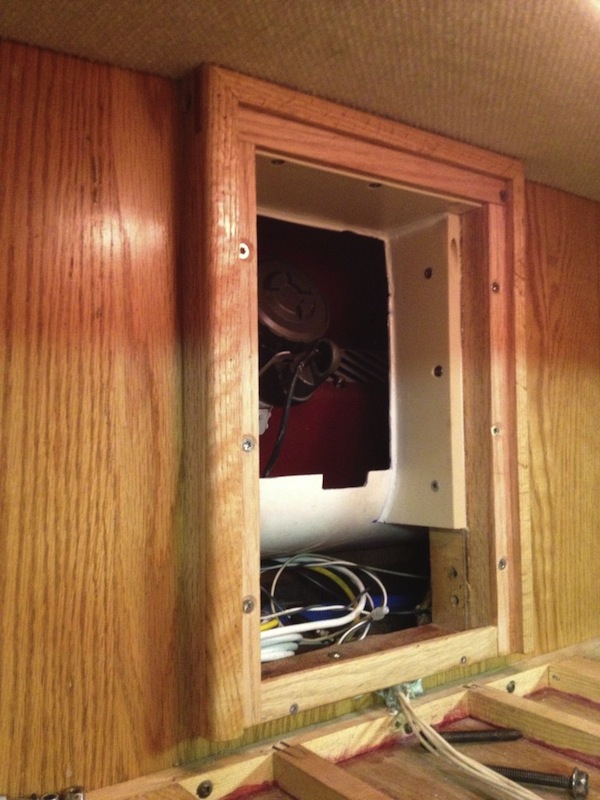
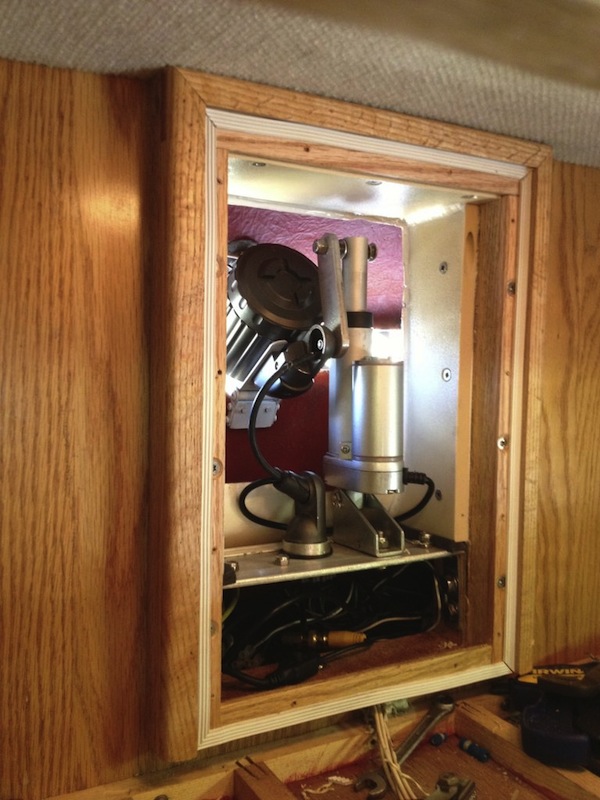
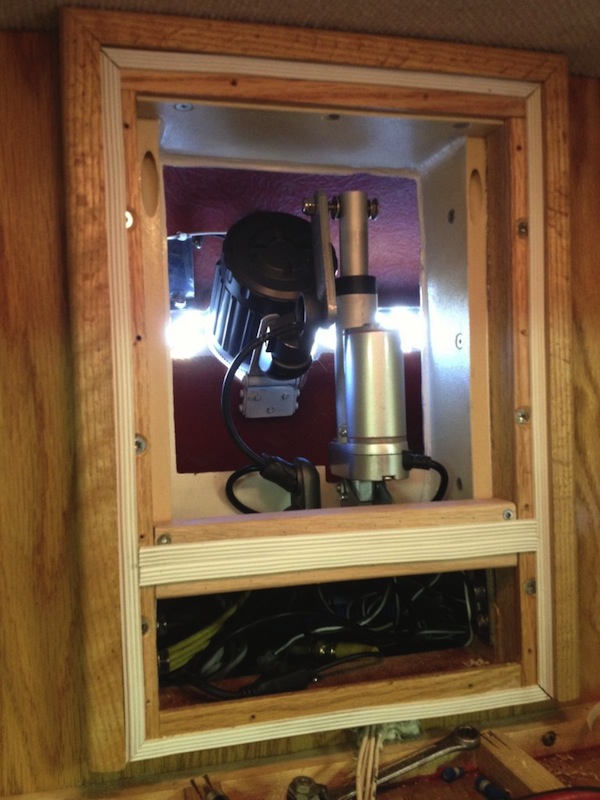
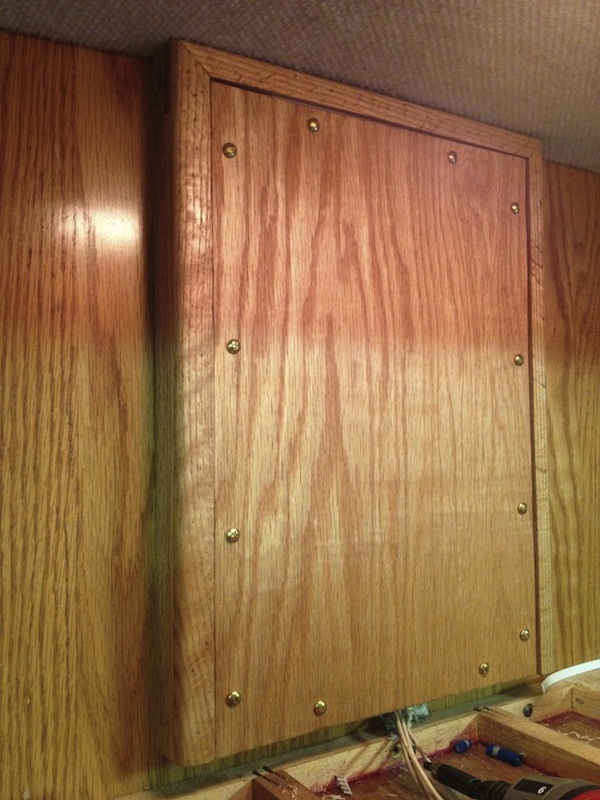
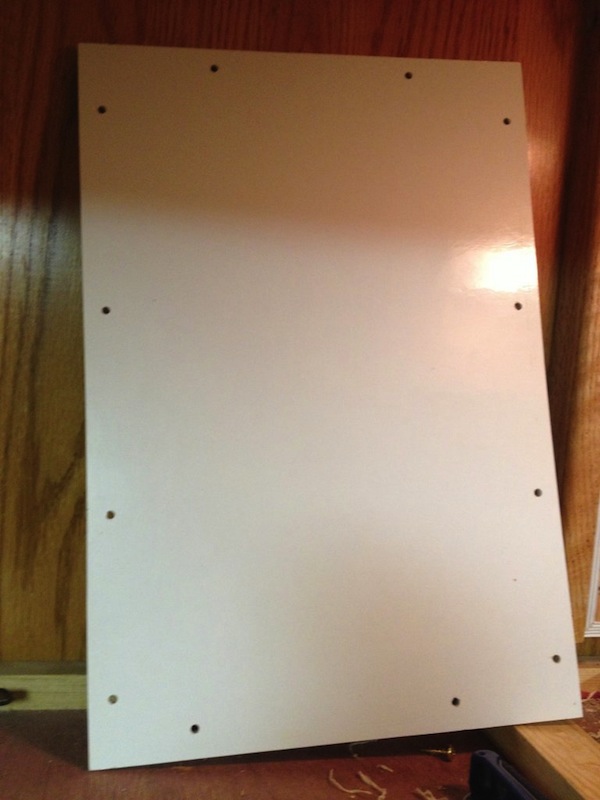
There is a picture of the power tilt switch, and some shots that show the screen with the camera zoomed out in various degrees of tilt. As I mentioned to John and my previous post, you can see to within a little less than 3 feet of the back of the coach although it’s a bit difficult to tell right now because of the slope behind where the coach is parked (it drops off close to 3 feet in 20′). In the photo with the camera set at the widest zoom and tilted down as far as it will go, you can see a portion of the ladder to the right (which is of course actually on the curbside). Of course the camera set for mirroring.
